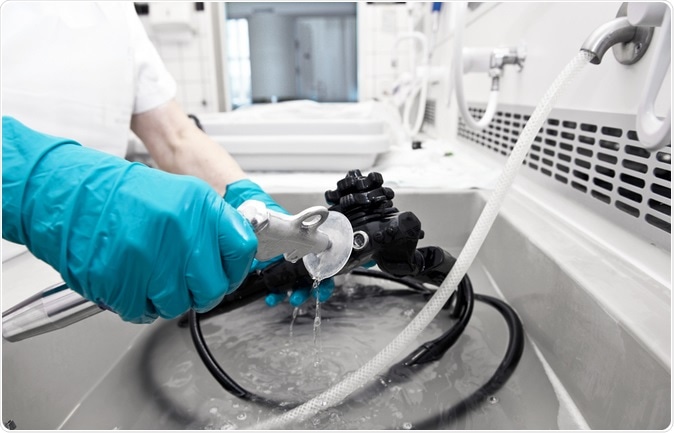According to a new study, nurses who are work disinfectants continually through their careers are more likely to develop a chronic lung disease called chronic obstructive pulmonary disease (COPD).
The results come from analysis of health of over 55,000 nurses in the USA in the Nurses’ Health Study II. The results of this study will be presented (11th September 2017) at the European Respiratory Society International Congress held in Milan, by Dr Orianne Dumas (PhD) from INSERM, Villejuif, France.

Image Credit: Sielemann / Shutterstock
Broadly the study shows that tasks that involve use of disinfectants including cleaning surfaces lead to exposure to certain chemicals. These lead to a 22% to 32% increased risk of developing COPD. For this study Dr Dumas and her colleagues looked deeper into health information from 55,185 female registered nurses enrolled in the US Nurses' Health Study II. This enrollment had begun way back in 1989 and some interesting results and associations have been derived from this group of participants. The Nurses’ Health Study II is regulated by the Channing Division of Network Medicine, Brigham and Women's Hospital and Harvard Medical School, Boston, Massachusetts, USA.
The team collected information about the nurses who were on their nursing jobs in 2009 and had no history of COP, and followed them up until May 2017. Results showed that at the end of the study, 663 nurses were diagnosed with COPD. They used questionnaires to assess the amount of exposure to disinfectants and other chemicals at their jobs among these participants. Other factors that contribute to COPD were also asked about to rule out other possible contributing factors to this condition. This included information regarding smoking, age, body mass index as well as ethnicity.
Dr Dumas explained the results saying that nurses who are regularly in contact with disinfectants to clean surfaces, are at a significantly higher risk for developing COPD. The association of weekly cleaning instruments with disinfectants and development was weaker compared to those who cleaned surfaces.
A deeper understanding of the matter was sought. Specifically, glutaraldehyde, a strong disinfectant that is usually used to cleanse instruments, was found to be one of the culprits. Others include bleach, hydrogen peroxide, alcohol and quaternary ammonium compounds. These are used for lower level disinfection of the floors and furniture. These were found to raise the risk of COPD by 24 to 32 percent. Dr Dumas noted in the study that 37% of nurses used disinfectants to clean surfaces every week and 19% used disinfectants to clean medical instruments each week.
There is previous scientific evidence that exposure to disinfectants could be linked to breathing problems among users and health care workers. The actual link between use of disinfectants and COPD has not been explored in details previously. This is the first study that establishes this connected explained Dumas. She said that this study could help policy makers and authorities take into consideration the occupational hazards of the healthcare workers and thus appropriately develop guidelines for disinfection and cleaning of healthcare settings including hospitals. She added that this was a preliminary study and a deeper and more detailed study was needed and the research team was looking at the US Centers for Disease Control and Prevention for funding and support.
Source:
Abstract no: OA 1774, "Occupational exposure to disinfectants and COPD incidence in US nurses: a prospective cohort study - European Respiratory Society International Congress 2017